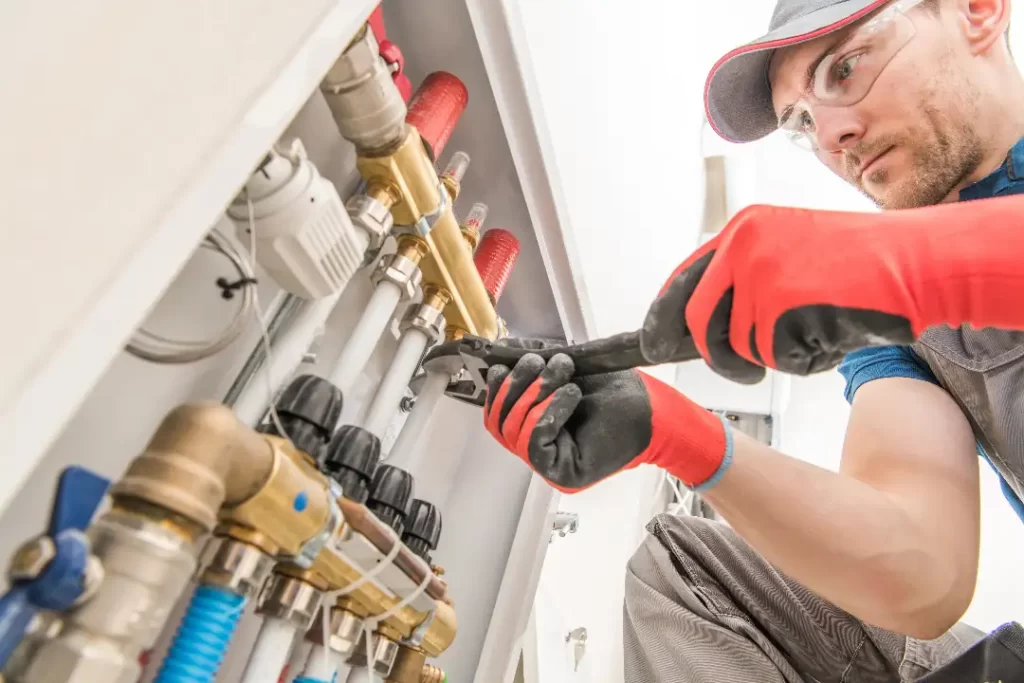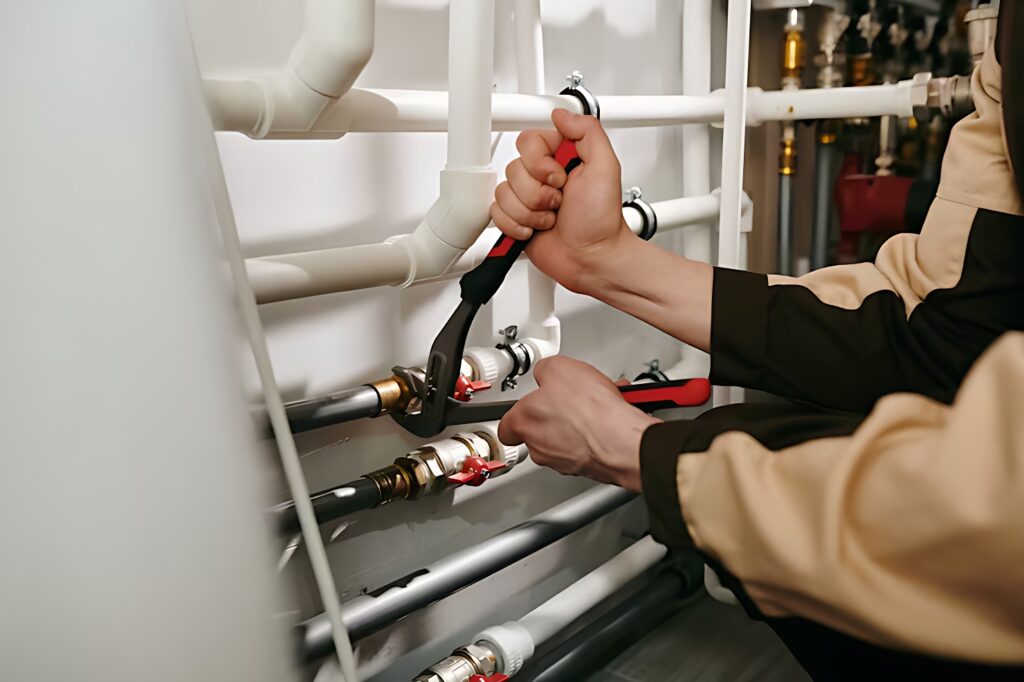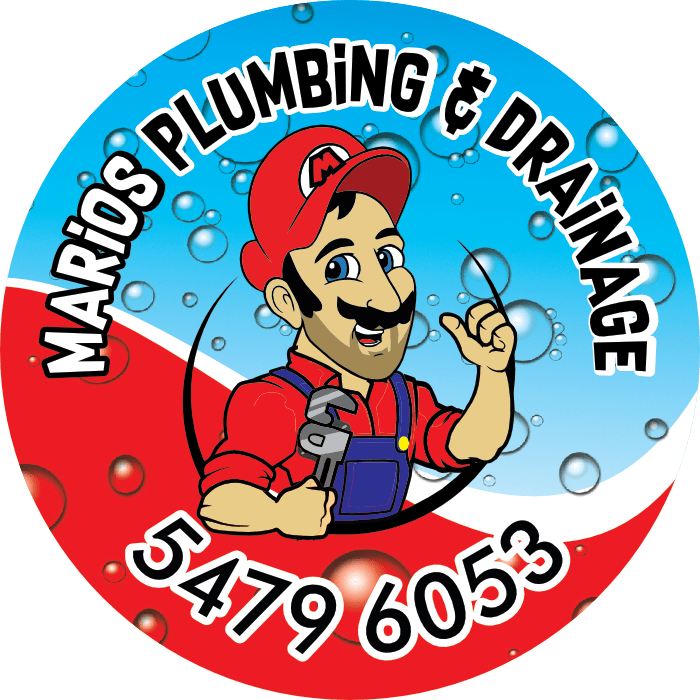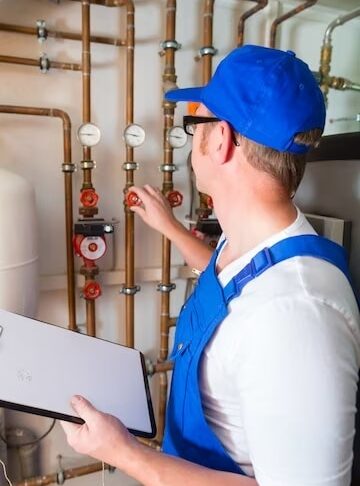Welcome to our comprehensive guide on mastering gas fitting, where safety is paramount. Whether you’re a seasoned professional or a DIY enthusiast, understanding the essentials of gas fitting is crucial to ensure safety and efficiency in your projects. Gas fitting involves working with potentially hazardous materials, making safety the top priority at all times. From understanding local codes and regulations to selecting the correct materials and tools, every step in gas fitting requires meticulous attention to detail. This guide will cover essential safety tips such as leak detection, proper ventilation, and emergency procedures, ensuring you have the knowledge to handle any situation safely. Moreover, mastering techniques like pipe cutting, threading, and sealing connections will empower you to execute your projects with confidence and precision. NBy the end of this guide, you’ll have a solid foundation in gas fitting safety and techniques, enabling you to approach your projects with expertise and ensuring the safety of yourself and those around you. Stay tuned as we delve into the crucial aspects of mastering gas fitting.
Safety First: Importance of Gas Fitting Safety

Gas fitting is a specialized field that involves the installation, maintenance, and repair of gas appliances and piping systems. While it plays a crucial role in ensuring our homes and businesses are heated and supplied with fuel efficiently, it also carries inherent risks if not performed with utmost care and adherence to safety protocols. In this article, we’ll delve into why prioritizing safety in gas fitting is paramount,exploring key considerations, potential hazards, and essential safety measures every gas fitting professional and enthusiast should be aware of.
Understanding the Risks: Why Gas Fitting Safety Matters
Gas fitting involves working with natural gas or propane, which are highly combustible and potentially hazardous if mishandled. The risks associated with gas fitting include gas leaks, explosions, fires, and carbon monoxide poisoning. Understanding these risks underscores the critical importance of strict adherence to safety standards and procedures.
Legal and Regulatory Compliance
Gas fitting is governed by stringent regulations and codes established by local, state, and national authorities. These regulations are in place to ensure the safety of both the installer and the occupants of the building. Compliance with these regulations is not just a legal requirement but a moral obligation to protect lives and property.
Importance of Proper Training and Certification
Proper training and certification are essential for anyone involved ingas fitting. Training programs teach safe practices, awareness of hazards, and the correct use of equipment. Certification ensures that individuals have met specific competency standards and are capable of performing gas fitting tasks safely and effectively.
Hazards Associated with Gas Fitting
Gas leaks are one of the most common hazards associated with gas fitting. They can occur due to faulty installations, damaged pipes, or improper maintenance. Gas leaks pose a significant risk of explosion or fire and can also lead to health issues such as headaches, nausea, and dizziness due to exposure to natural gas or carbon monoxide.
Safety Equipment and Personal Protective Gear
The use of proper safety equipment and personal protective gear is non-negotiable in gas fitting. This includes but is not limited to, gas detectors, flame-resistant clothing, gloves, safety goggles, and respirators. These items help mitigate risks and protect individuals from potential hazards.
Choosing the Right Gas Fitting Equipment

Choosing the right equipment is crucial in gas fitting tasks to ensure efficiency, safety, and compliance with industry standards. Whether you’re a professional gas fitter or a DIY enthusiast, having the appropriate tools and equipment can make a significant difference in the quality and safety of your work. In this article, we’ll explore essential gas fitting equipment, their purposes, considerations for selection, and tips on maintaining them for optimal performance.
Understanding Essential Gas Fitting Equipment
Gas fitting involves a variety of specialized tools and equipment tailored for tasks such as pipe cutting, threading, welding, testing for leaks, and more. Each piece of equipment serves a specific purpose in ensuring the safe and effective installation, maintenance, or repair of gas systems.
Safety Considerations in Equipment Selection
When choosing gas fitting equipment, safety should always be the top priority. Opt for tools and equipment that are designed and certified for use with gas systems. Look for safety features such as ergonomic designs, anti-slip handles, and built-in mechanisms that prevent accidental gas leaks or ignition.
Tools for Gas Pipe Preparation and Assembly
Tools such as pipe cutters, reamers, and deburring tools are essential for preparing gas pipes before assembly. These tools help ensure clean cuts, smooth edges, and proper fitting of pipes, reducing the risk of leaks and ensuring a secure connection.
Equipment for Pressure Testing and Leak Detection
Pressure testing equipment, including pressure gauges and test pumps, is crucial for verifying the integrity of gas installations. Leak detection tools such as gas detectors and bubble solutions help identify leaks quickly and accurately, allowing for prompt repairs and preventing potential hazards.
Welding and Brazing Equipment
For tasks that require joining metal components in gas fittings, welding and brazing equipment are indispensable. Choose welding machines, torches, and soldering irons that are compatible with the materials and specifications of the gas piping system to ensure strong, leak-free joints.
Advanced Techniques in Gas Fitting: Tips for Professionals
Gas fitting professionals can enhance their expertise by mastering advanced techniques that improve efficiency, safety, and compliance. In this article, we’ll explore key strategies and tips to help professionals excel in their craft, ensuring superior results and client satisfaction.
- Precision in Pipe Sizing and Layout: Accurate measurement and layout ensure optimal flow and minimize pressure drops in gas systems.
- Advanced Welding and Brazing Techniques: Mastering TIG welding and oxy-acetylene brazing ensures strong, leak-free joints in complex installations.
- Pressure Testing and Leak Detection: Utilize advanced equipment for thorough pressure testing and precise leak detection to ensure system integrity.
- Understanding Gas Regulations: Stay updated with local regulations and codes to ensure compliance and safety in all installations.
Conclusion
Mastering gas fitting is crucial for both professionals and homeowners alike to ensure safety and efficiency. By following the essential safety tips and techniques outlined in this blog, you can significantly reduce the risks associated with gas installations and repairs. Remember, always prioritize regular inspections, proper ventilation, and the use of certified professionals for installations and repairs.
For further inquiries or professional assistance with gas fitting services on the Sunshine Coast, contact Mario’s Plumbing and Drainage. Located in Queensland, Australia, our experienced team is dedicated to ensuring the highest standards of safety and reliability in all our services. Whether you need routine maintenance, emergency repairs, or new installations, you can reach us at 07 5479 6053. Your safety and satisfaction are our top priorities, and we look forward to assisting you with all your gas fitting needs.
3.5


